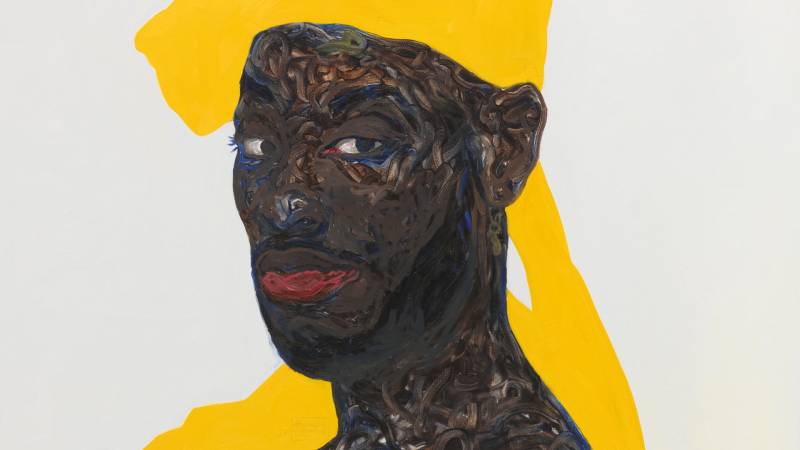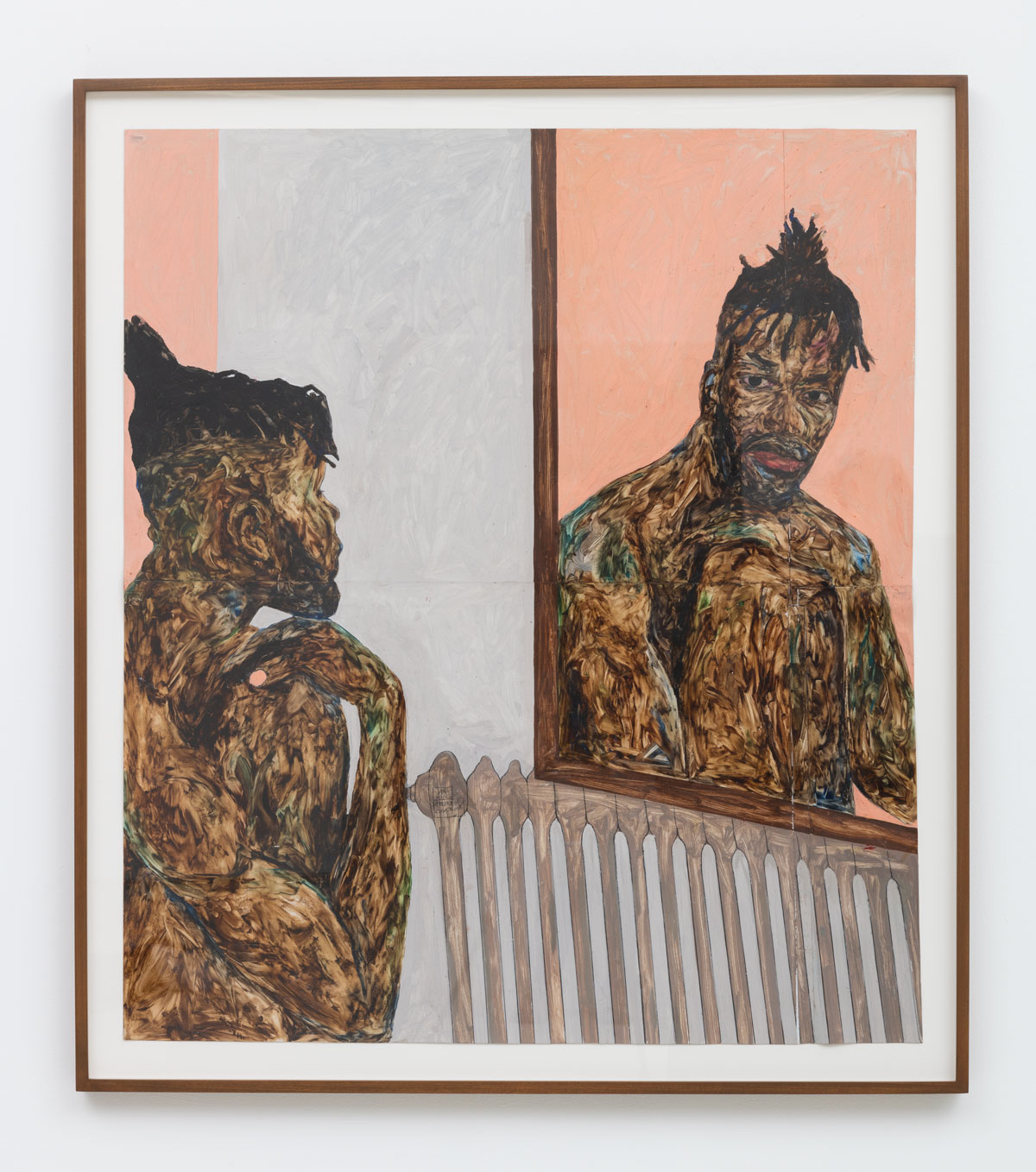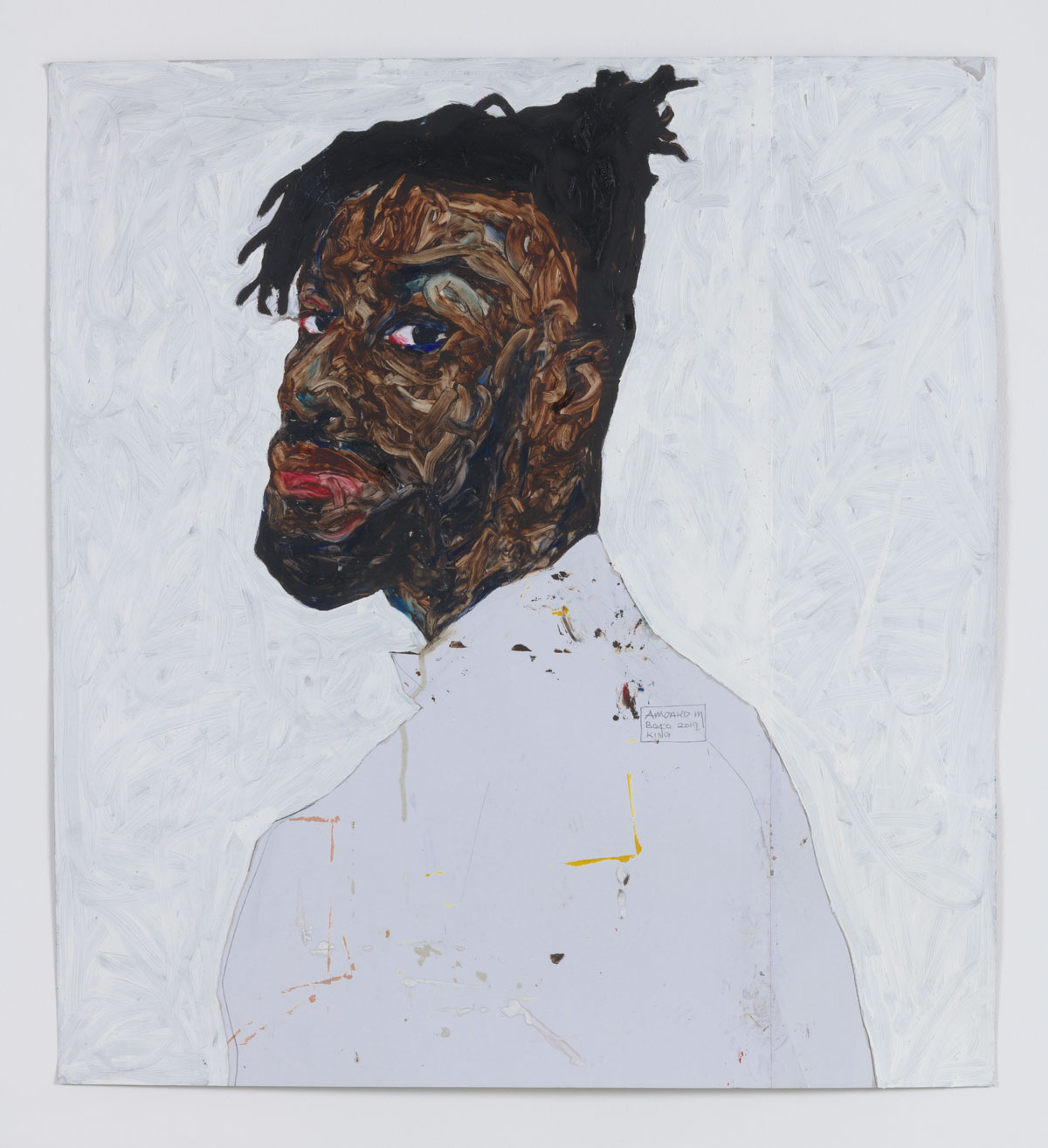I must admit that I was at first reluctant to visit Soul of Black Folks, a solo exhibition of paintings by the Ghanian artist Amoako Boafo. His was the headliner for a four-show spectacular reopening of the Museum of the African Diaspora in October 2021. Featuring Billie Zangewa, Sydney Cain and Sam Vernon, the opening day was an amazing celebration of Black artistry across a variety of mediums. But walking around the museum as just one of two Black arts writers in the press preview, I was reminded of the tense politics attending the representation of Black folk.
It’s appropriate that Boafo’s first solo museum exhibition in the United States takes its name from the title of W. E. B. Du Bois’ seminal text, The Souls of Black Folk. Boafo’s Soul of Black Folks, curated by Larry Ossei-Mensah, riffs on Du Bois’ text to extend Du Bois’ examination of Black American life across the Atlantic to Africa. While Du Bois predicted the prominence of the color line as the greatest challenge of the 20th (and now, 21st) century, perhaps he also foresaw that the challenge would be met through a medium whose primary grammar is expressed through colors and lines.
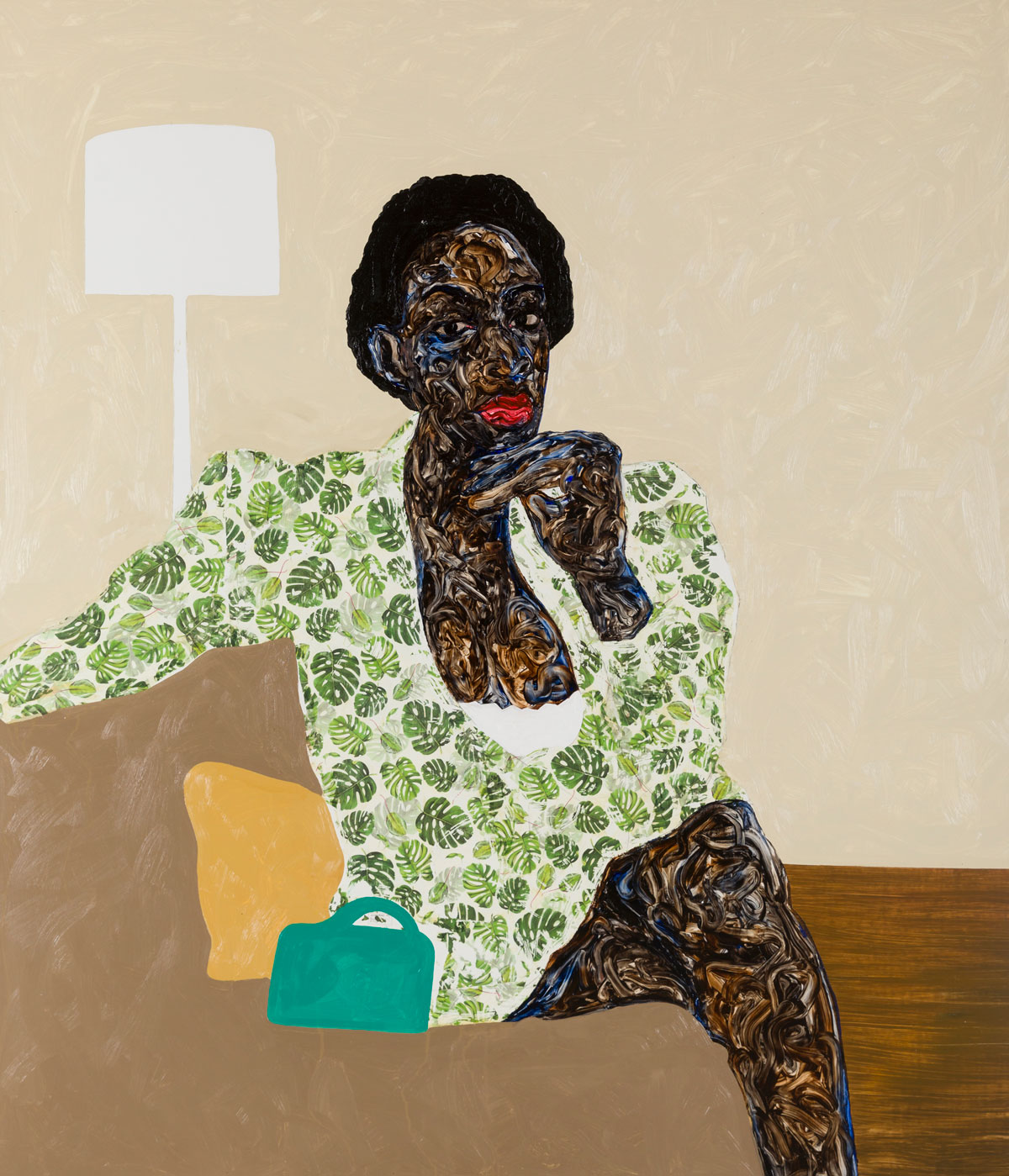
At first glance, Soul of Black Folks seems pretty straightforward: portraits of Black people, gazing back, rendered in vibrant textural adornment that celebrates their humanity and vitality. Boafo’s particular approach adopts finger painting to render the Black skin of his subjects in intimate fashion.
Critics might wonder, what’s the difference between an Amoako Boafo painting and a painting by another famous Black artist who utilizes portraiture? Jordan Casteel, Amy Sherald or Kehinde Wiley use different color palettes and approaches, but all create portraits of Black people in everyday life gazing back at the viewer. Critics might also say that the political message of Black portraiture is as thin as the paper on which many of Boafo’s oil paintings are made. But what makes Boafo’s work unique it is the moment in which the star of his celebrity has risen: a moment of interest in Black representation and the concurrent accelerated commercialization of Black portraiture.
A wave of art world interest in Black portraiture followed on the heels of George Floyd’s murder in the summer of 2020, with big shows opening at the Los Angeles County Museum of Art and taking over Art Basel Miami in the fall of 2021. This “awakening” comes with predominantly white institutions promising to do better about representation and diversity. Boafo’s meteoric rise has coincided with these larger trends to the extent that he has become the poster child of Black portraiture.
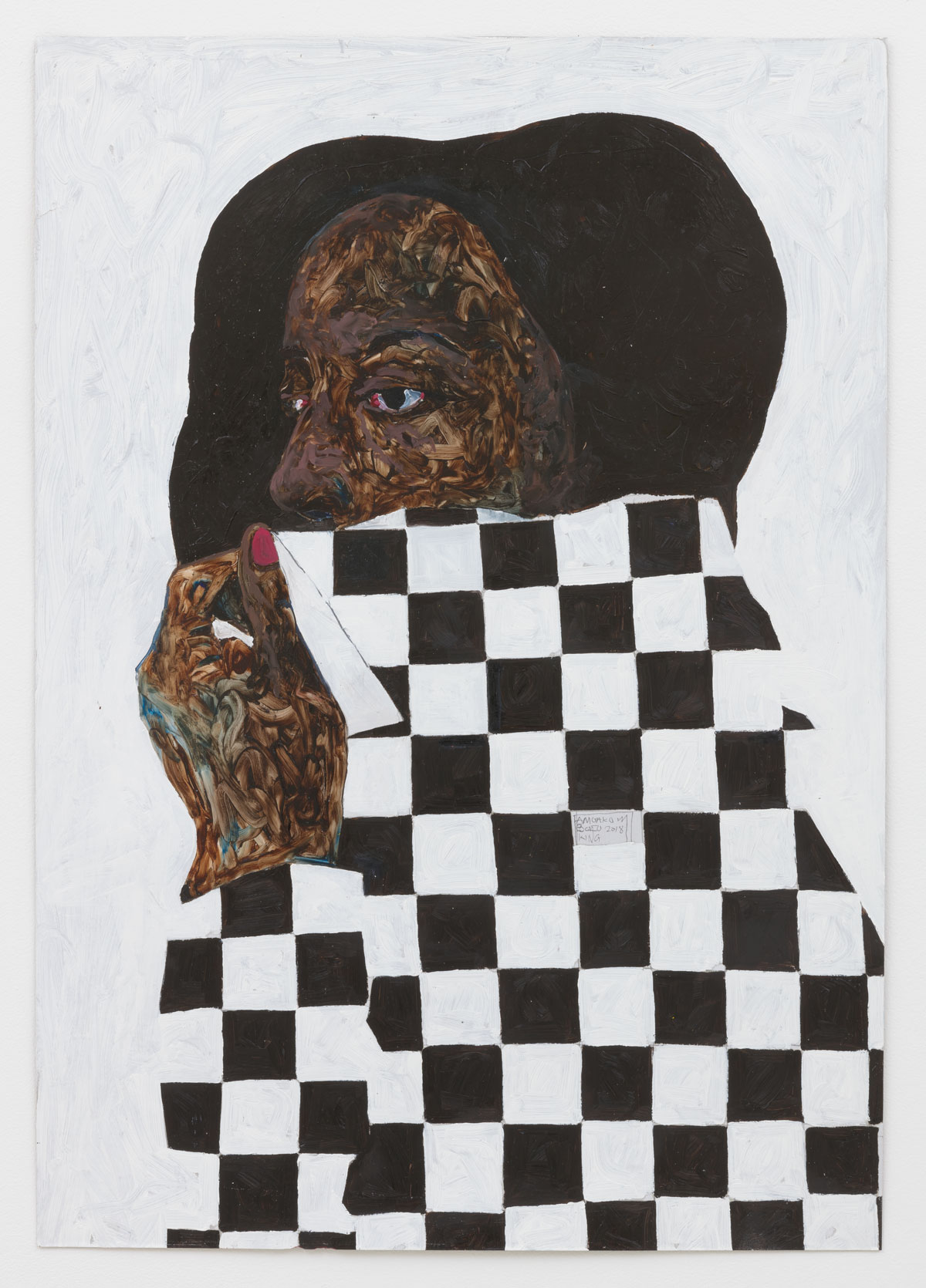
As the value of his paintings shot up, Boafo even centered in some ethically suspect art world drama. In February of 2020, Stefan Simchowitz flipped Boafo’s Lemon Bathing Suit; the L.A. dealer has been called the “Art World’s Patron Satan.” Other portraits made by Boafo have been flipped as well, feeding off his skyrocketing fame. He gained enough notoriety that Jeff Bezos sent his artwork to space.
